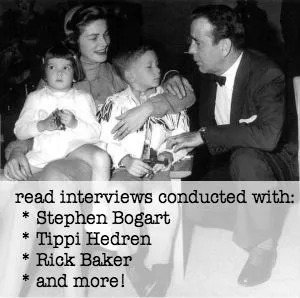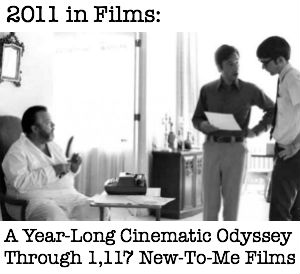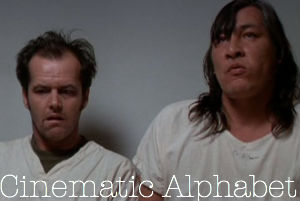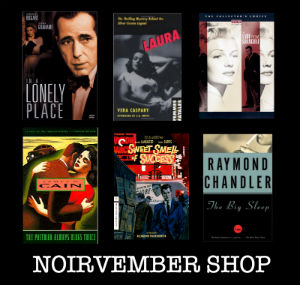Oscar Vault Monday – The Last Picture Show, 1971 (dir. Peter Bogdanovich)
I first saw The Last Picture Show in 2011 right before I moved back to San Francisco for film school. I decided I had to finish all of the A.F.I. 100 Years. . .100 Films lists (the original combined with the 10th anniversary). I didn’t have many left and this was one of them. I watched it on a weekday morning with my mother and the two of us were so sucked into we hardly noticed two hours had gone by. What a film. I recently was lucky enough to watch it on the big screen at the Castro Theatre and I must say, as I often do, pretty much everything is better when you see it ont he big screen. I’m so glad I got to see Robert Surtees’s divine cinematography on the big screen. The film was nominated for eight Academy Awards, winning two: Best Cinematography, Best Supporting Actress Ellen Burstyn, Best Supporting Actress Cloris Leachman (won), Best Supporting Actor Jeff Bridges, Best Supporting Actor Ben Johnson (won), Best Adapted Screenplay, Best Director and Best Picture. The other films nominated that year were: A Clockwork Orange, Fiddler on the Roof, Nicholas and Alexandra and winner The French Connection.
I also watched Paper Moon right around the same time I saw this one and I must say Bogdanovich in the 70s really hit all the right notes.I won’t even go into my undying love for What’s Up, Doc? (which I saw for the first time at the Red Vic in S.F. just before the movie house closed its doors for good). Even the oft-neglected Nickelodeon is filled to the brim with perfection. However, Bogdanovich’s only two Oscar nominations came as writer/director of The Last Picture Show. Whatever Hollywood may have to say about Bogdanovich, few directors have done so much for the history of the city and its industry as he has. I definitely suggest you check out his many books on film history, his interviews with some of the greatest filmmakers that ever lived (going as far back as someone like silent film legend Allan Dwan) and his film about John Ford, which is one of the best about filmmaking I’ve ever seen.
This film was based on a semi-autobiographical novel by Larry McMurtry (many of whom’s books have been made into films and television). Set in the early-50s, this film is pure New Hollywood. It’s the kind of story that Old Hollywood just wasn’t allowed to make during the production code era. Having someone like Bogdanovich, to whom film has meant so much, make a film set twenty years earlier, but one that feels every inch a modern picture, was really the only way to go. Bogdanovich apparently saw the paperback of the book while he was out shopping, read the synopsis and put it back. Then a few weeks later Sal Mineo gave him a copy of it, saying he’d always wanted to be in this as a film, but he was too old. The rest, as they say, is history. While the movie theatre is only really in the opening and the closing parts of the film, it is an integral part of the plot, as well of the town. Having come from a very small town, I really felt connected to this story , even if I grew up in a small town in California in the 90s. I think they did a great job of getting that small town feel, the isolation and the lack of privacy. Which is, in itself, a sort of metaphor found within cinema itself. It’s also important to note that Bogdanovich changed the name of the town for the film to Anarene, which was inspired by Abilene, the name of the town in Howard Hawks’ Red River, which is the film shown at the cinema on its last night.
Timothy Bottom gives an excellent performance in this film as its main protagonist Sonny. Bottoms had made his film debut the earlier that year in Johnny Got His Gun. Sonny is your average small town boy. He’s pretty content with what is life is, except that he really wants to have sex with his girlfriend. Pretty much that’s the only reason he’s been with her for so long. When they break up that starts a catalyst for Sonny, as he begins relationships (sexual and platonic) with several other women in the town. He never really knows his place, but as the film ends, he comes to the bittersweet realization that this town is where he’ll always stay.
This was Jeff Bridges’s most high profile film to date and he earned his first of six Oscar nominations for his performance as Duane (he eventually won the award for 2009’s Crazy Heart). He’s got similar issues to Sonny, in that he wants to sleep with his girlfriend, but she is resistant. This will change eventually, but the result is less than stellar and causes a larger rift between Duane, Sonny and Duane’s girlfriend Jacy. Duane has a little more drive than Sonny and is always trying to better himself (appearance are really everything to him, as you see in one painful scene after the boys have humiliated a fellow boy named Billy and Duane hides in the car “asleep” so as not to get into trouble). Eventually he leaves the town to make more money, comes back with a fancy car and then winds up signing up for the army to go fight in Korea, leaving his car with Sonny. This, in a way, shows that Duane will forever be in the town, just like Sonny.
Bogdanovich spotted Cybill Shepherd as a model on the cover of Glamour, which is how he came to cast her as Jacy in the film (the two would later have an affair during the production that would last for some time). Jacy is an interesting character in that she comes from a family that moved upwards (her father made all his money with a lucky oil strike). Her mother is an alcoholic who is clearly unhappy with her lot in life, so she continually pushes Jacy to reach for more. Though her mother doesn’t approve of Duane, she even offers to get Jacy birth control. Jacy keeps Duane at bay, though she is curious, until she goes to a naked swimming party with other rich kids. This is a very 70s scene, yet here it is set int he 1950s. We tend to have this sanitized Leave It To Beaver notion of what the 50s were and this sequence alone destroys all of those illusions. Jacy develops a crush on a rich boy from another town, but he tells her to come back when she isn’t a virgin. This results in two disastrous (for different reasons) attempts by Duane to take Jacy’s virginity. Jacy’s plans don’t work out when the other boy marries someone else and Duane leaves town. Eventually she has a very shallow experience with one of her father’s foremen (and her mother’s ex-lover) – though this is only in the director’s cut, it’s important for the character’s sexual journey. She eventually attaches herself to Sonny (after finding out that he was having an affair with the coach’s wife. Sonny always had a crush on her!) This also leads to disaster and the eventual expulsion of Jacy from the town to Dallas. There’s discussion of Jacy going to college, but she doesn’t see the point, as she (thought) she had three different options for marriage. All the women in this movie are stuck where they are because of marriage, expect Jacy, who can’t wait to get married herself. It’s a time where she could go to college, she could learn things and maybe have a life of her own, but it’s not what she knows, it’s not how she’s raised and those options don’t seem like options. She’s able to be sexually free (long before the sexual revolution), but she’s really just as trapped as everyone else.
Most people know Cloris Leachman for her collaborations with Mel Brooks and if that’s all they know (like me), then when they see her in this film, they will be in for quite a shock. Leachman campaigned hard for the role of Ruth Popper and eventually won it – and an Academy Award. Ruth is a lonely woman with some unstated disorder that continually takes her to the hospital in a nearby town. He husband – the high school’s coach (and it’s hinted, a closeted homosexual) – asks Sonny to drive her. The two eventually begin an affair. They find an escape from everything together in Ruth’s small house. When Sonny strays, it seems this happiness will be lost forever. In the film’s final scene, Leachman gives one of the greatest monologues in film history. The final shot, which I will discuss at the end, leaves the audience in the most perfect bittersweet of moods.
Ellen Burstyn received her first of five Oscar nominations for her role as Jacy’s mother Lois (Burstyn won Best Actress for 1974’s Alice Doesn’t Live Here Anymore). Bustryn was offered any role in the film; she chose Lois as she found her to be the most interesting. Like I said earlier, Lois is an unhappy woman. She pushed her husband to be successful and this has given her status and material things, but it has not made her happy. She’s pushing her daughter the same way, and it doesn’t seem to be bringing her any happiness either. We do get a glimpse at the one time she was happy; in the early years of her marriage she had an affair with Sam the Lion (more on him later), just after his wife died. We mostly hear of this from Sam’s point of view, but when Lois confirms what we heard earlier, we see a light on her face not seen throughout the rest of the film. Lois is a woman who knows her cage. She knows that society built it for her, but she also knows that she helped guild it, because if she was always going to be caged it might as well be the best. But it’ll always be a cage.
When I was watching this at the Castro, I couldn’t for the life of me remember where I had seen this face before. Then I realized it was Clu Gulager, who was hopelessly cool with Lee Marvin in The Killers. Gulager plays Abilene (there’s that name again!), who work’s for Jacy’s father, had an affair with Lois (and probably everyone else in town) and eventually takes advantage of Jacy. He’s a man who knows that he’s got all he’s ever going to get from life and he does his best to take advantage of every opportunity.
Eileen Brennan gives a wonderful performance as Genevieve, the cafe waitress. She knows everything about everyone and she’s sassy and tells it like it is, but she’s also the kindest character in the film other than Sam the Lion himself. Her husband works in the oil fields and she indicates they have so much medical debt they’ll be working forever to pay it off (it’s not explicitly stated, but it feels like they had a child die). Genevieve is one of the few truly honest people in the town, both to herself and to others. Brennan was nominated for a Best Supporting Actress Oscar for 1980’s Private Benjamin.
In his debut performance, Randy Quaid plays another rich kid, who introduces Jacy to the wild and crazy naked parties, alcohol and drugs of the youth of the upper echelon. He’s clueless and spoiled and can’t ever seem to make it with Jacy despite his best efforts (she would let him, but he’s too clueless to even unbutton her top). Quaid was nominated for Best Supporting Actor for 1973’s The Last Detail.
Ben Johnson made his film debut in 1939 and was best known for his supporting work in many westerns with John Wayne. He didn’t want this role as it was too wordy. Bogdanovich contacted John Ford, who said to Johnson, “Do you want to be the Duke’s sidekick forever?” Bogdanovich then told Johnson, “You, in this role, are going to get an Academy Award,” and when finally Johnson accepted he said, “All right, I’ll do the damn thing.” Obviously, he did win the award and most deservedly so. Sam the Lion is the crux of the town (much like the movie theatre and pool hall and cafe that he owns). He’s a man stuck in the past, but also planted firmly in the present. He protects many people in the town, from others, but also from themselves. When he dies, everything goes into a tailspin, with few people ever finding their balance again.
Which brings us to the last scene in the film, between Sonny and Ruth. Sonny has lost everyone important to him, except Ruth, whom he had abandoned months earlier. When he comes to her, she let’s him have a new one. Giving the kind of speech many a woman should have given the bad men in their lives. And he takes it, silently. He knows he’s fucked up and he knows she shouldn’t take him back. But he also knows that she’s all he’s got. After her tirade, a change comes over Ruth. She knows, too, that he’s all she’s got and that as angry as she is, the happiness they had – and maybe will have again- is worth all the pain. If they’re stuck in this town, they may as well be stuck together.
Posted on May 13, 2013, in Oscar Vault Monday and tagged 1971, Ben Johnson, Cloris Leachman, Clu Gulager, Cybill Shepherd, Eileen Brennan, Ellen Burstyn, Jeff Bridges, Peter Bogdanovich, Randy Quaid, The Last Picture Show, Timothy Bottoms. Bookmark the permalink. 3 Comments.





























I totally agree. Bogdanovich was on a real roll in the 70s, it’s amazing to think he doesn’t have a shelf full of Oscars. He’s apparently working on a new screwball comedy. I hope it’s as much fun as What’s Up Doc? Paper Moon is probably my favorite of his films.
Certainly had the necessary requirement for all memorable movies…great casting.
Pingback: Oscar Vault Monday – The Last Picture Show, 1971 (dir. Peter Bogdanovich) | velvetmedia